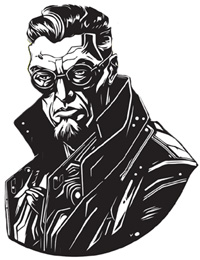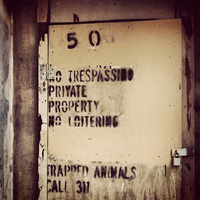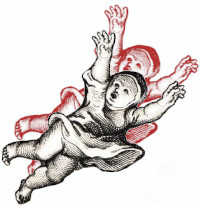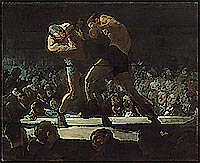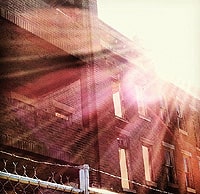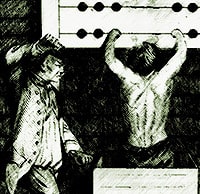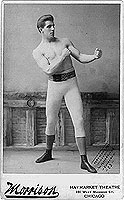The #55 line spans the Towson, Parkville and Essex police precincts of Baltimore County.
The major transfer points for the #55 line in Baltimore city are all along Northern Parkway, at McClean, Harford, and Belair Roads. Crime has gotten so bad at Harford that the stop is rarely used at night, with one or none boarding, as opposed to the previous half dozen.
The driver is hitting fifty MPH, zooming through the city portion of the route, so I have to step out and get his attention. The front of the bus is occupied by 4 tough looking white guys, all of whom will offload in Overlea. White women no longer use this bus at night and the men do not risk Rosedale or Essex stops. Hispanics and Asians are now absent. The middle portion of this bus is occupied by as many working black adults, headed home. The back deck is occupied by a pack of wannabe-Gs, posing in thuggish style, most still in their teens.
Overlea Station is under construction, temporarily safe at night, lit up by road crew lights and milling with Hispanic hardhats. As the whites offload one by one, the older black man driving gets more and more nervous, the boys in the back making fun of him, talking shit, one of them saying, “Fuck you, Old-school Niggеr. It's Black Spring up in here.”
Black men are threatening someone at Kenwood Plaza, the first major County transfer point, which has recently been overrun by hoodlums and thugs from the adjacent Cedonia area of the City, which is linked to the infamous Mondawmin area by the #5 line.
At Golden Ring one older black woman offloads, no one loads. On Monday it was a single black man offloading. People do not risk standing on Philadelphia Road at Golden Ring.
By the time I get to the major transfer point at Stemmer’s Run and Old Eastern Avenue, all that is left are the thugs on the back deck, talking shit about me, with comments such as, “Yo, Pops thinks he’s walkin’ dis shit?”
I am rude to the driver, and do not give him a courteous goodbye, like the other whites did. The more courteous I am to him, the greater the chance is that I get tracked back into the park. Like Monday night, as I offload with a woman, who has a man waiting for her, I notice three knots of blacks packed up defensively and eying me with misgivings. Only myself and the larger black men walk away from this mass transit hub—which has not seen a police officer after dark, for a year—alone, the rest of the blacks being met by friends, cabs, sedans or hacks, or packing up together as they offload.
I walk off into the night, out Old Eastern Avenue, the final stretch of the 2-mile two lane main artery that parallels its wider counterpart, Eastern Boulevard from Middlesex Shopping Center to Middle River Bridge, where they merge. As I consider the fact that three black-on-white attacks have occurred in the past five days, on Old Eastern Avenue, that I know of, the genius of this suburban invasion strikes me.
The #23 line, which intersects here, has brought thousands of welfare families from the Edmonson Village area of West Baltimore, where white and black elites would like to re-acquire some of the impressive early 20th century single family homes. No less than three sprawling low rise housing projects dot the end of the #23 line around Fox Ridge, with the walkway over the 702 highway having to be encased in steel to prevent bricks from being dropped on white motorists headed to their waterfront housing.
The #24 line dead ends below Cedonia, in one of the most crime ridden section of East Baltimore, where aggressive gentrification is underway, with two low rise projects having been demolished over the past 10 years. This section of East Baltimore is sitting up against three interstate highways and is being sought by developers who wish to market highway access for Washington D.C. commuters. The violent youth being moved out of Cedonia are being resettled in the Whispering Woods housing projects in Rural Carol Island, where ghetto hair salons have popped up and increasing incidents of gun and knife violence are transforming the crimescape. The #24 line runs until 1 a.m., which is a bizarre schedule for an extended secondary line, as if the MTA planners considered the needs of drug mules and assassins when this line from nowhere to nowhere was established.
Out Philadelphia Road to White Marsh runs the #35 line, which brings in crime from hyper-violent Southwest Baltimore. White Marsh Mall and The Avenue at White Marsh have been Baltimore County commercial centerpieces for decades, but are now becoming high crime zones, with the same trends as seen in Essex, Rosedale and Middle River, two or more black youth, often armed with a firearm, attacking individual white males and white couples. One wonders if the weapons used in this crime were part of the 100,000 dollars in missing merchandize from the Golden Ring Wal-Mart guns and ammo department in 2015.
These two City gentrification initiatives are propelling the resettlement of many of the most violent blacks in Baltimore City, into the adjacent County, where working class whites fled to out of East Baltimore three decades ago. Eastern Baltimore County is where working people who could not afford to buy in distant Harford County fled to in their quest to live free of rampant crime and racist mob aggression.
Black Spring is the story of the government-sponsored ghettoization of four Eastern Baltimore County communities, and of the ongoing, declared, low-intensity, black-on-white race war that has been hot since the last week of April, 2015.



